Secure Shell (SSH) is a critical tool for managing remote systems, widely used for its secure data communication capabilities. In this article, we will look into a common error message: “ssh: Could not resolve hostname [name]: No such host is known” or “Name or service not known” that may appear when attempting to connect to an SSH server.
It’s important to note that this error message is not exclusive to Linux; it can also occur in Windows (such as Windows 11 or 10), especially when using SSH clients like PuTTY or the Windows Subsystem for Linux (WSL or WSL2). The occurrence of this error message can be attributed to various reasons, and the solutions may vary depending on your environment and setup.
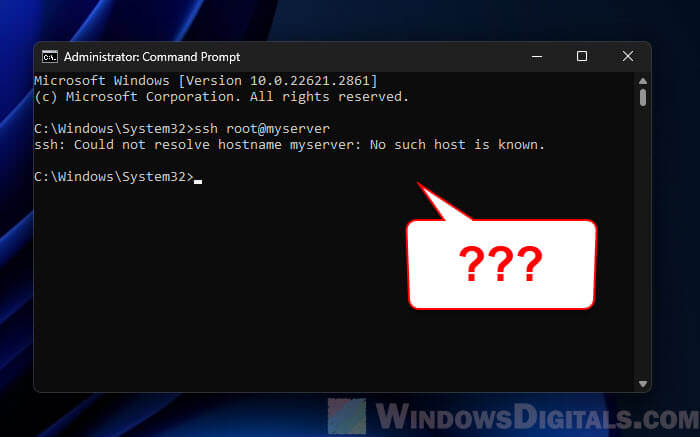
What does the error mean?
The error message “ssh: Could not resolve hostname [name]: No such host is known” or “Name or service not known” pops up when your SSH client on Windows fails to translate the provided hostname into a network address. In simpler terms, it’s like trying to call someone whose number isn’t in your phonebook.
This problem usually originates from a glitch in the Domain Name System (DNS) resolution, where the system cannot map the human-friendly hostname (like “server.example.com”) to its corresponding IP address. It’s a common issue that can occur due to various reasons – from a typo in the hostname to more complex network issues.
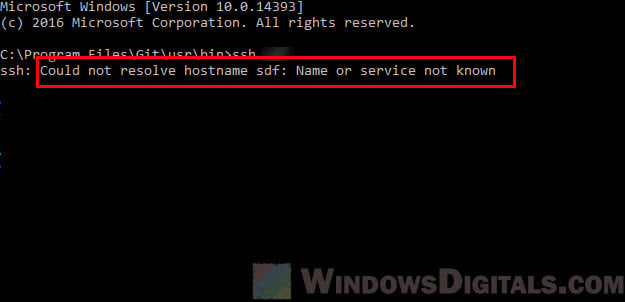
How to correctly connect to an ssh server
Before looking into more technical solutions, let’s start with some basic yet crucial checks:
Correctness of the hostname
It might seem obvious, but typos are common. Double-check the hostname you’re trying to connect to. Ensure it’s spelled correctly and matches the intended target.
SSH command syntax
Verify that your SSH command is structured correctly. A typical SSH command should look like ssh username@hostname. Mistakes in the command syntax can lead to various errors, including the hostname resolution issue.
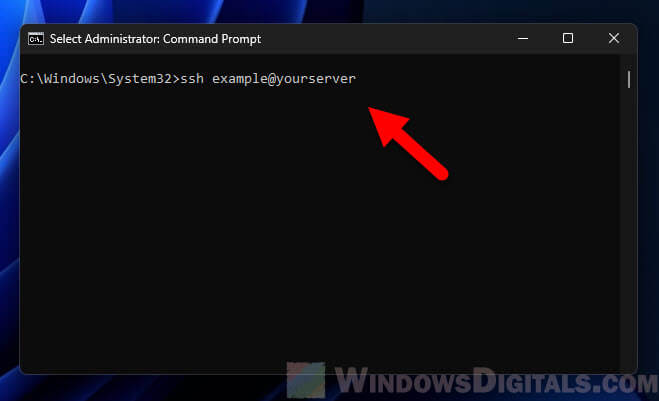
These initial steps are quick to perform and can save you time if the error is due to simple oversights.
Checking the DNS resolution
If the preliminary checks don’t resolve the issue, the next step is to focus on DNS resolution:
Using nslookup or ping
These tools can help you verify whether the hostname is correctly resolving to an IP address. Open Command Prompt and enter nslookup [hostname] or ping [hostname]. If these commands return an IP address, DNS is functioning correctly for that hostname. If not, there’s a DNS resolution issue.
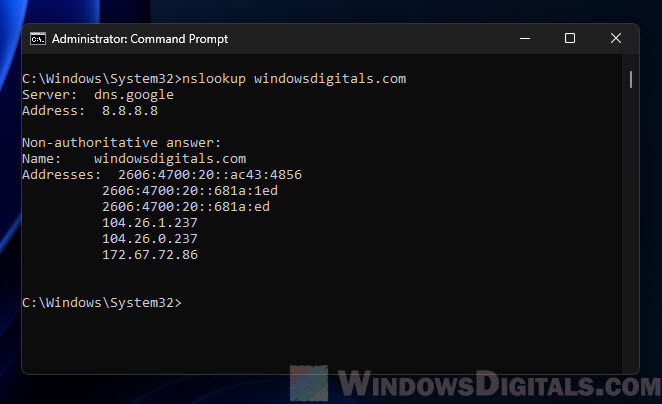
Understanding DNS’s role
DNS acts like a phonebook for the internet, translating human-friendly hostnames into IP addresses. If DNS can’t translate the hostname, your SSH client won’t know where to connect.
Checking DNS configuration
Ensure your computer’s DNS settings are correctly configured. Sometimes, using a different DNS server, like Google’s 8.8.8.8 or Cloudflare’s 1.1.1.1, can resolve these issues.
Performing these checks can often pinpoint if the problem lies with DNS resolution, a common culprit behind the “ssh: Could not resolve hostname” error.
Pro tip: DNS Servers to Unblock Websites and Possibly Everything
Checking your network connectivity
A stable and functional network connection is vital for successful SSH communication. Here are steps to ensure your network isn’t the root cause of the issue:
- Start with the basics – ensure your device is connected to the internet. Try accessing a website or use
ping 8.8.8.8in the Command Prompt to test your connectivity. - Sometimes, network issues can stem from misconfigured settings. Verify that your network adapter is correctly configured and that there are no IP conflicts or incorrect gateway settings that might be hindering your connection.
- If you’re using a VPN or proxy, it could interfere with SSH connections. Try temporarily disabling these services to see if it resolves the issue.
- Simple yet often effective – restart your modem, router, or any network switches. This can resolve transient network issues that might be affecting DNS resolution or connectivity.

Inspect the “hosts” file in Windows
The Windows hosts file can override DNS and directly map hostnames to IP addresses. An incorrect entry in this file could be the reason for the “Could not resolve hostname” error in SSH. Here’s how to check and edit the hosts file:
- The hosts file is typically found at
C:WindowsSystem32driversetchosts. You will need administrative privileges to edit this file. - Open the hosts file using a text editor like Notepad, run as an administrator. Look for any entries that contain the hostname you’re trying to connect to. If you find an incorrect or outdated IP address mapped to this hostname, this could be causing your issue.
- If you find a problematic entry, you can either update it with the correct IP address or remove the entry to allow DNS to resolve the hostname normally. Remember to save the file after making changes.
- After editing the hosts file, try your SSH connection again to see if the issue is resolved.
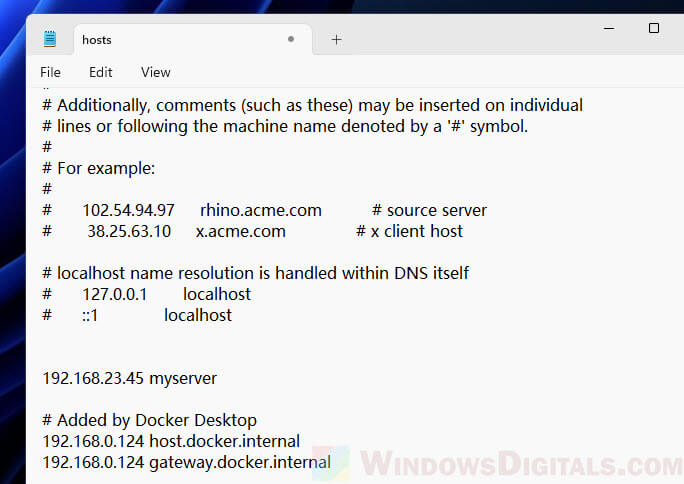
Incorrect or outdated entries in the hosts file are a less common but potential cause of SSH connection problems. This step is particularly important if you’ve recently changed the IP addresses of your servers or if you’re working in an environment where the hosts file is used for network configuration.
Firewall and security software
Windows Firewall or other security applications can sometimes block SSH connections, leading to the “ssh: Could not resolve hostname: Name or service not known” or “No such host is known” error.
First, check your Windows Firewall settings. Search for and open “Windows Defender Firewall with Advanced Security” via the Start menu. In the firewall settings, look for any rules that might be blocking outbound SSH connections (typically on port 22). If you find such rules, you can temporarily disable them to test the connection. Remember to re-enable these rules after testing to maintain your system’s security.
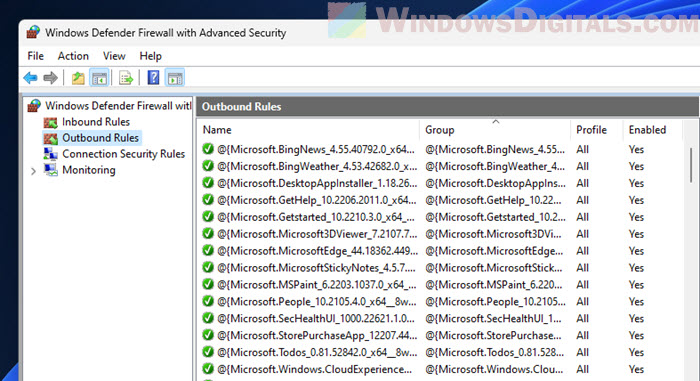
If you’re using third-party antivirus or security software, it might have its own firewall or network protection features. These can also interfere with SSH connections. Temporarily disabling these features can help determine if they are the cause of the issue. As with the Windows Firewall, ensure you turn these protections back on after testing.
In both cases, if disabling the firewall resolves the issue, consider creating an exception rule for your SSH connections instead of keeping the firewall turned off.
Related resource: Using PowerShell to Test Port Connection Without Telnet
Using IP Addresses directly
Bypassing hostname resolution by directly using the server’s IP address in your SSH command is a straightforward way to diagnose if DNS resolution is the core issue. Instead of relying on DNS to translate the hostname to an IP, you input the IP address directly into your SSH command. This method can quickly confirm whether the problem lies with DNS or with other aspects of the SSH connection process.
To do this, instead of using ssh username@hostname, use ssh username@IP_Address, where IP_Address is the actual IP address of the server you’re trying to connect to. If this method works and you successfully establish an SSH connection, it clearly indicates that the issue is with DNS resolution for the hostname, not with the SSH server or your client setup.
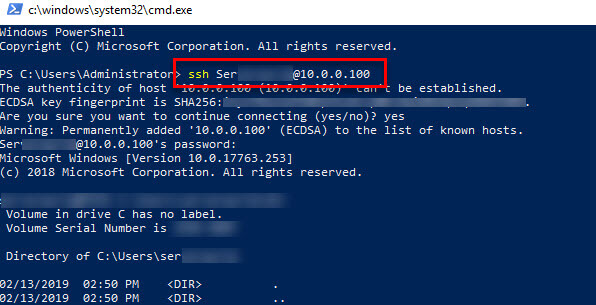
Remember, while this method is useful for troubleshooting, it’s generally more practical to use hostnames for regular operations due to their readability and ease of management, especially in dynamic IP environments.
Might be useful: Using FTP via Command Line (CMD) on Windows 11
SSH client configuration and logs
When facing the “ssh: Could not resolve hostname” error, it’s also important to review your SSH client’s configuration and logs. These can provide insights into whether the issue is caused by a misconfiguration or other underlying problems.
To start, examine your SSH client settings. In Windows, if you’re using a third-party SSH client, ensure it’s configured correctly according to the documentation. For the built-in Windows SSH client, check the environment variables and any config files that might be affecting its operation.
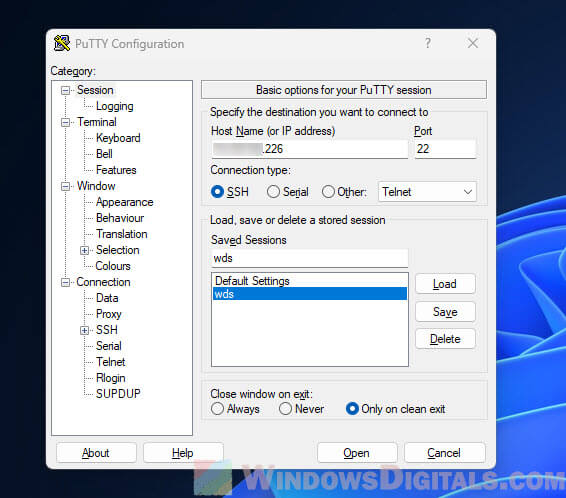
Next, access the SSH client logs. The process for this varies depending on the SSH client you’re using. For the built-in Windows client, you can increase the verbosity of the output by adding the -vvv flag to your SSH command, like ssh -vvv username@hostname. This command will provide detailed debug information, which can be invaluable for pinpointing where the connection process is failing.
Example: If the logs indicate a problem at the point of hostname resolution, this reinforces the likelihood of a DNS issue. If they point to another issue, such as a problem with authentication or a timeout, then the root cause lies elsewhere.
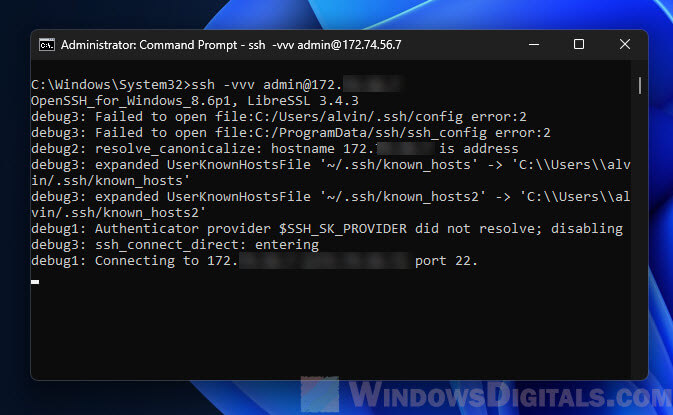
It might just be a server-side issue
While the focus has been on the client-side, it’s also important to briefly consider the server-side setup, especially if the previous steps haven’t resolved the issue.
- Ensure that the SSH server you’re trying to connect to is running and accessible. If you have access to the server through another means, check that the SSH service is active.
- Just like on the client side, the server’s firewall can block incoming SSH connections. Verify that the server’s firewall allows connections on the SSH port (default is 22).
- If the server recently changed its IP address, there might be a lag in the updated address propagating through the DNS system. This can lead to mismatches and connection issues.
- On the server, ensure that your user account has the necessary permissions and that the server is set up to authenticate your client correctly, whether through password or SSH key.
Checking these server-side aspects can help rule out external factors that might cause the “Could not resolve hostname” error.
Summing up
If you’re encountering the “ssh: Could not resolve hostname” error and aren’t deeply familiar with SSH, the solution often lies in the basics. Start by double-checking the username and hostname you’re using – a simple typo can be the root of the issue. Also, give attention to your DNS settings, particularly the hosts file in Windows, as incorrect entries here are common culprits for such errors. These straightforward checks are usually the most effective first steps in resolving this common SSH connection issue.
The key is to approach each potential solution step by step, ruling out the simplest possibilities first before moving on to more complex diagnostics. And, if all else fails, don’t hesitate to seek external help from network professionals or online communities.
